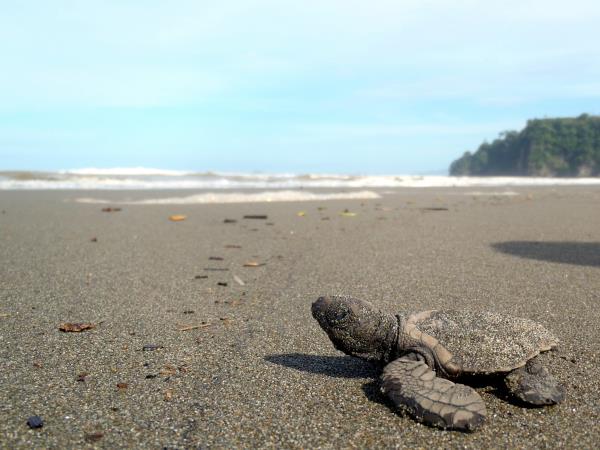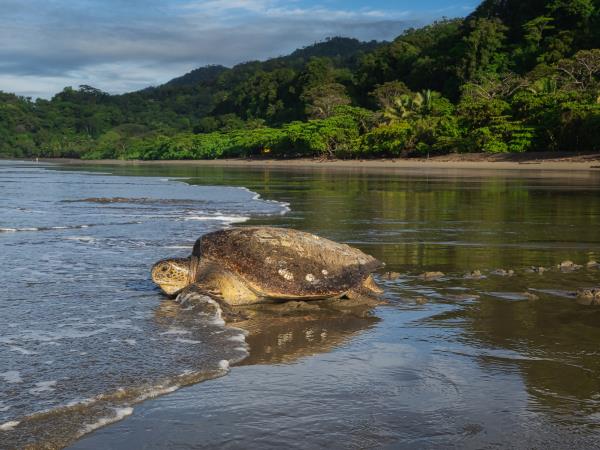
Guardians of the Green Coast: An Immersive Journey into Costa Rica’s Turtle Conservation Tours
Costa Rica, a beacon of biodiversity and ecological stewardship, has long captivated travelers with its pristine rainforests, volcanic landscapes, and vibrant wildlife. Yet, beneath the canopy and along its sun-drenched shores lies a profound story of struggle and hope – the fight for the survival of its sea turtles. These ancient mariners, critical to marine ecosystems, face myriad threats, from poaching to climate change. In response, a unique form of tourism has flourished: turtle conservation tours, offering an immersive, hands-on experience that transcends the typical vacation, transforming visitors into active participants in a vital global effort.
These aren’t merely sightseeing trips; they are calls to action, invitations to engage directly with the challenges and triumphs of marine conservation. For those seeking more than just a glimpse of nature, but a profound connection and the opportunity to make a tangible difference, Costa Rica’s turtle conservation tours present an unparalleled journey into the heart of environmental protection.
The Plight of the Ancient Mariners
Costa Rica’s Pacific and Caribbean coasts are nesting grounds for five of the world’s seven sea turtle species: the majestic Leatherback, the graceful Green turtle, the prolific Olive Ridley, the critically endangered Hawksbill, and the less common Loggerhead. Each species plays a crucial role in maintaining the health of coral reefs, seagrass beds, and ocean ecosystems. However, their existence hangs by a thread.
Global populations have plummeted due to a confluence of human-induced factors. Poaching of eggs and adult turtles for consumption and illegal trade remains a significant threat in many areas. Habitat destruction, driven by coastal development and erosion, diminishes vital nesting beaches. Ocean pollution, particularly plastic, leads to entanglement and ingestion, often proving fatal. Climate change alters ocean currents, affects sex ratios of hatchlings (determined by sand temperature), and intensifies storms that erode nesting sites. Fishing bycatch, where turtles are accidentally caught in commercial fishing gear, also accounts for thousands of deaths annually. "The odds are stacked against them from the moment they hatch," explains Dr. Elena Ramirez, a marine biologist with the Costa Rican Turtle Conservation Alliance. "Only about one in a thousand hatchlings survives to adulthood. Our job is to improve those odds dramatically."

More Than a Vacation: The Conservation Tour Experience
Turtle conservation tours in Costa Rica are designed to be an educational and participatory experience. Participants, often referred to as "voluntourists," work alongside local conservationists, park rangers, and marine biologists. The activities are diverse, demanding, and deeply rewarding, offering an unfiltered look at the realities of conservation work.
A typical tour might involve late-night beach patrols, walking for hours under the moonlight to locate nesting females. When a turtle is found, volunteers assist in recording data – species, size, number of eggs – and often help relocate nests that are too close to the high-tide line or in areas prone to poaching. This relocation to protected hatcheries, often fenced enclosures, dramatically increases the survival rate of the eggs. During the day, activities can include cleaning beaches of plastic and debris, maintaining hatcheries, monitoring nests for signs of hatching, and, thrillingly, assisting with the release of hatchlings into the ocean.
Beyond the direct interaction with turtles, volunteers learn about the local ecosystem, the intricate balance of marine life, and the socio-economic factors influencing conservation efforts. It’s an immersive classroom where the ocean is the blackboard and the turtles are the living curriculum.
Iconic Sanctuaries: Where Conservation Comes Alive
Costa Rica boasts several critical nesting sites, each offering a unique conservation tour experience:
Tortuguero National Park (Caribbean Coast): Often called the "Land of Turtles," Tortuguero is one of the most important nesting sites for Green sea turtles in the Western Hemisphere, and also hosts Leatherbacks, Hawksbills, and Loggerheads. Accessible primarily by boat or small plane, its remote location makes it an ideal sanctuary. Conservation tours here focus heavily on night patrols during nesting season (July to October for Greens, February to April for Leatherbacks), data collection, and monitoring. The experience is enhanced by the park’s lush rainforest, home to jaguars, monkeys, and an astounding array of birds.
Ostional Wildlife Refuge (Pacific Coast): This site is world-renowned for the arribada (arrival), a unique mass nesting event of Olive Ridley sea turtles. During arribadas, tens of thousands of females emerge from the ocean simultaneously to lay their eggs over a few days. Conservation efforts here are unique, involving a legal, managed harvest of the first eggs laid during an arribada by local communities. This controversial yet effective strategy incentivizes the community to protect subsequent nests, as the first eggs are often destroyed by later nesters anyway. Volunteers assist with beach patrols, data collection, and protecting nests from predators.
Gandoca-Manzanillo Wildlife Refuge (Caribbean Coast): Located near the Panamanian border, this refuge is vital for Leatherback and Hawksbill turtles. It’s a prime example of community-led conservation, where local residents are deeply involved in protecting nests and educating visitors. Tours here often emphasize patrolling and hatchery management, providing a more intimate, community-driven experience.

Osa Peninsula (Pacific Coast): The rugged and wild Osa Peninsula, home to Corcovado National Park, also hosts several smaller, impactful turtle conservation projects. Species like Olive Ridleys, Leatherbacks, and Hawksbills nest on its pristine, often remote beaches. These projects tend to be smaller, offering a more rustic and intensive volunteering experience, often focusing on remote beach patrols and hatchery work in conjunction with research initiatives.
The Volunteer’s Journey: Challenges and Rewards
Participating in a turtle conservation tour is not for the faint of heart. Days can be long, often starting before dawn and extending late into the night. The work can be physically demanding, involving long walks on sandy beaches, sometimes in challenging weather conditions. Accommodations are typically rustic, designed to minimize environmental impact, and electricity and internet access can be limited. Mosquitoes and other insects are part of the tropical reality.
However, the rewards far outweigh these challenges. The sheer thrill of witnessing a massive Leatherback emerge from the ocean to lay her eggs, or the awe-inspiring sight of hundreds of tiny hatchlings scurrying towards the vast ocean, is an experience that stays with you forever. "There’s nothing quite like seeing a hatchling make its first journey to the sea," says Sarah Jenkins, a volunteer from Canada. "You feel a profound sense of purpose, knowing you played a small part in giving that tiny creature a chance at life."
Beyond the direct turtle interactions, volunteers often form deep bonds with fellow participants from around the world, sharing a common passion for conservation. They gain a deeper understanding of ecological principles, local culture, and the complex interplay between human society and the natural world. It’s an opportunity to unplug from the digital world and reconnect with nature in its rawest, most beautiful form.
A Sustainable Future: Impact and Responsibility
The impact of these conservation tours is multi-faceted. Directly, they contribute to higher hatchling survival rates by protecting nests from poachers and predators, and relocating them to safer ground. This direct intervention is critical for species on the brink. Indirectly, these tours provide crucial financial support for local conservation organizations, funding research, equipment, and the salaries of local staff. They also generate economic benefits for local communities, providing an alternative, sustainable income source that incentivizes protection over exploitation.
Furthermore, conservation tours are powerful tools for raising global awareness. Participants return home as ambassadors for sea turtle conservation, sharing their experiences and inspiring others to support these vital efforts. They embody the principles of responsible tourism, where travel is not just consumption, but contribution.
When choosing a tour, it’s essential to select reputable organizations that prioritize turtle welfare, employ ethical practices, and are transparent about how funds are used. Look for programs that emphasize education, involve local communities, and hold necessary permits from the Costa Rican government. A genuine conservation tour should always put the well-being of the turtles first, ensuring minimal disturbance to their natural behaviors.
Conclusion: A Legacy of Hope
Costa Rica’s turtle conservation tours offer more than just an adventure; they offer a purpose. In a world grappling with environmental crises, these experiences provide a tangible way for individuals to contribute to a healthier planet. They are a testament to Costa Rica’s enduring commitment to its natural heritage and an invitation for global citizens to join the effort.
By stepping onto the moonlit beaches, walking alongside these ancient creatures, and safeguarding their fragile future, participants don’t just witness conservation; they become an integral part of it. It’s an investment not just in a memorable journey, but in the survival of a magnificent species, and in the enduring legacy of a nation that understands the profound value of its wild heart. For those who answer the call, the reward is an indelible connection to nature and the profound satisfaction of having helped guide new life towards the vast, hopeful expanse of the ocean.

